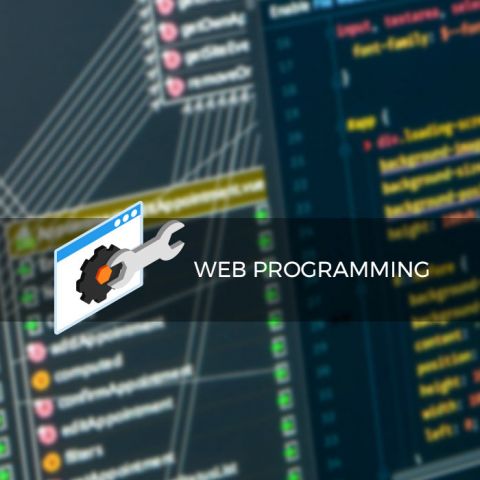How We Plan to Use AI for Programming at Cityline Websites

Artificial Intelligence has quickly moved from being a curiosity to being a practical tool in the day-to-day work of many businesses. In software development especially, it is showing real promise as a supporting tool. At Cityline Websites, we are looking closely at how AI can complement our workflows, make certain tasks more efficient, and help us think through problems in new ways.
There are a lot of AI tools on the market right now, but the two categories that have stood out as most helpful for us are generative AI chatbots and AI-assisted coding tools. These are already proving useful in our work, and we see even greater potential for the future.
Generative AI Chatbots
Generative AI chatbots such as ChatGPT and Gemini have become some of the most visible tools in this space. Both are strong in slightly different ways, and both are evolving quickly. ChatGPT has been the one we have explored the most so far, primarily because of its wide adoption and steady improvement.
As a research tool, chatbots are extremely helpful. Instead of paging through dense technical manuals or fragmented documentation online, we can use them to quickly get summaries of the methods, options, or code patterns we need to know about. While the answers are not always perfect, they give us a strong starting point that we can then validate and apply.
Over the past year, these tools have also proven useful in a range of programming scenarios:
- Boilerplate code generation: When there is repetitive work required, such as creating templates or scaffolding out code structures, AI can provide the initial draft that we then refine.
- Algorithm exploration: When facing a new challenge, AI can suggest possible approaches or logic that might work. We still test and verify everything, but the brainstorming stage is faster.
- Query building: AI can help draft complex queries or logic, giving us a framework that acts as a leaping off point.
The benefit is not that AI replaces development, but that it can take on the first round of heavy lifting so we can move forward more efficiently.
How We Currently Use AI
From our experience so far, the value of AI has been in three main areas:
- Repetition and Templates
AI helps when the task is repetitive, such as creating code that follows a familiar pattern across multiple files. Having a draft produced automatically speeds things up and reduces the chance of small mistakes that creep in when writing the same thing many times. - Research and Documentation
Software development often involves learning how to use third-party tools, frameworks, or plugins. AI can summarize documentation in a way that is easier to act on quickly. It is especially useful when working with large or unfamiliar libraries. - Frameworks and Starting Points
Whether it is an SQL query, a page layout, or a general logic structure, AI can provide the basic outline that we can then expand upon. Even when it is not exactly what we need, it is often close enough that editing is easier than starting from scratch.
What AI does not do for us is make the big design calls or determine the architectural direction of a project. Those decisions still need to be handled carefully by people who understand the full scope of the system. What AI does is provide support along the way.
Coding Tools Beyond Chatbots
While chatbots have been the most visible part of AI’s rise, there are also specialized coding tools worth noting.
- GitHub Copilot has become a popular assistant inside coding environments. It predicts and fills in lines of code based on what you are writing, which can be useful when you are working with patterns that repeat. It is not always correct, but when it lines up with your intent, it can save time on routine programming tasks.
- Claude by Anthropic. It works primarily as a chatbot, but can be connected to editors through third-party integrations. It can be used to past code or generate boiler plate based on prompts. Some developers lean on it heavily for non-core code, where oversight is simpler.
- Cursor is an IDE that integrates AI features more deeply than traditional editors. It can even generate code from prompts, images, or existing files.. It’s a promising approach, but we remain cautious about relying too heavily on a system that produces full codebases without our direct involvement due to maintainability and security concerns.
- Gemini Pro integrations are another area to watch, especially as more options become available for use inside development environments such as Visual Studio Code.
Each of these tools has strengths, and each comes with questions around trust, maintainability, and security. For now, we prefer to use them in limited, well-defined cases where they clearly add value.
AI Limitations
AI is not perfect, and this is important to acknowledge. At times it produces answers that sound confident but are simply wrong. Other times it overcomplicates a solution or pursues a line of reasoning that is not useful.
This is why oversight is essential. Every time we use AI, we review, test, and verify the results before applying them. It is best thought of as an assistant rather than an authority. Used this way, it provides real value without creating unnecessary risk.
Summary
AI is already playing a role in how we build at Cityline Websites. It helps with repetitive tasks, accelerates research, and gives us strong starting points for new code. Looking forward, we see even more opportunities for it to contribute in planning, architecture, and project design.
We are realistic about its limitations, and we know it is not a replacement for human creativity or careful development. But as a supportive tool, it is becoming part of our process. By using it thoughtfully, we can take advantage of its strengths while avoiding its pitfalls, and that is the balance we plan to keep as AI continues to evolve.
